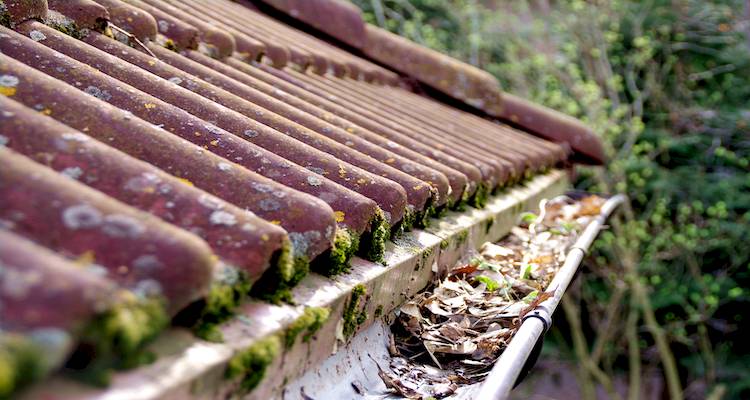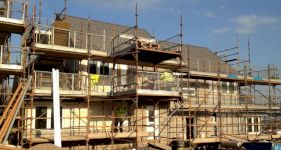How Much Does a Loft Conversion Cost (UK)?
- The average cost for a loft conversion in the UK is £40,000.
- It will take about 7 weeks to complete a typical loft conversion.
- A breakdown of pricing details for different types and sizes of loft conversions.
- How long loft conversions take to complete and an overview of what the project entails.
- Details about building regulation and planning permission requirements for loft conversions.
Want to know how much it will cost for a loft conversion in the UK?
Having your loft converted is an excellent way for homeowners to add extra living space to their homes.
But there are a lot of decisions you need to make if you're planning to have a loft conversion.
This guide has everything you need to know.
We breakdown the loft conversion prices for different types of conversions, finishes, and house types. Our aim is that this guide gives you a quick and easy way to get a ballpark idea of what you should expect it to cost to get the loft conversion that you want.
If you're ready to get a quote for your loft conversion, you can use MyJobQuote to easily find local loft conversion experts. Remember: it's important to get multiple quotes for large projects like this.
Want to learn more first?
Let's get started.
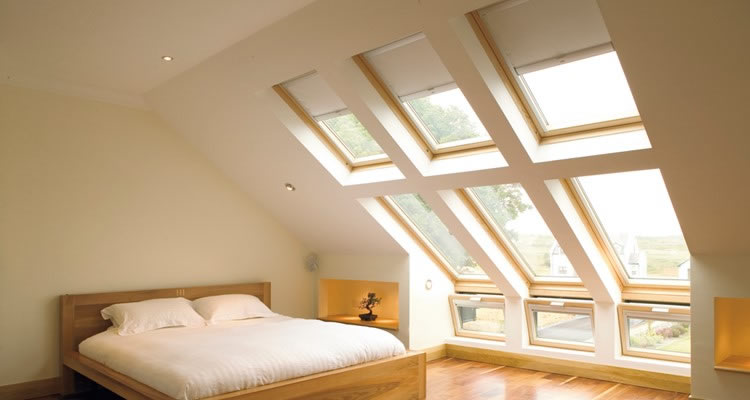
£40,000
Table of Contents
- What's the Cost of a Loft Conversion in the UK?
- Loft Conversion Cost by Type
- Loft Conversion Price Breakdown
- Loft Conversion Labour Costs and Timescales
- Loft Conversion Material Prices
- Additional Loft Conversion Costs
- Cost Factors of a Loft Conversion
- Do I Need an Architect for a Loft Conversion?
- Loft Conversion Stairs Cost
- Can I Have a Loft Conversion?
- Loft Conversion Ideas
- Do You Need Planning Permission for a Loft Conversion?
- Building Regulations For Loft Conversions
- Party Wall Agreement
- What's Involved in a Loft Conversion?
- Can I Build a Loft Conversion Myself?
- Benefits of a Loft Conversion
- Will a Loft Conversion Increase My House Value?
- Can I Have a Loft Conversion in My Bungalow?
- How to Keep Down Costs of a Loft Conversion
- Issues You May Come Across When Converting a Loft
- Loft Conversion Removal Cost
- Hiring a Loft Conversion Specialist Checklist
- Sources
What's the Cost of a Loft Conversion in the UK?
The average loft conversion costs between £20,000 - £60,000 in the UK. The price of a loft conversion varies widely based on the type of loft conversion you have, the quality of materials used, and the labour costs in your part of the UK.
The average cost of a Velux loft conversion is between £20,000 - £30,000. This is the most affordable way to convert your attic space and will take the least amount of time to complete (4 - 6 weeks).
The average dormer loft conversion costs between £30,000 - £40,000. Average hip-to-gable loft conversion prices are between £35,000 - £50,000 and involve changing the shape of the end of your roof to provide more space in your attic.
An average Mansard loft conversion costs between £35,000 - £60,000. This is the most expensive option, as it involves changing the whole shape of your roof.
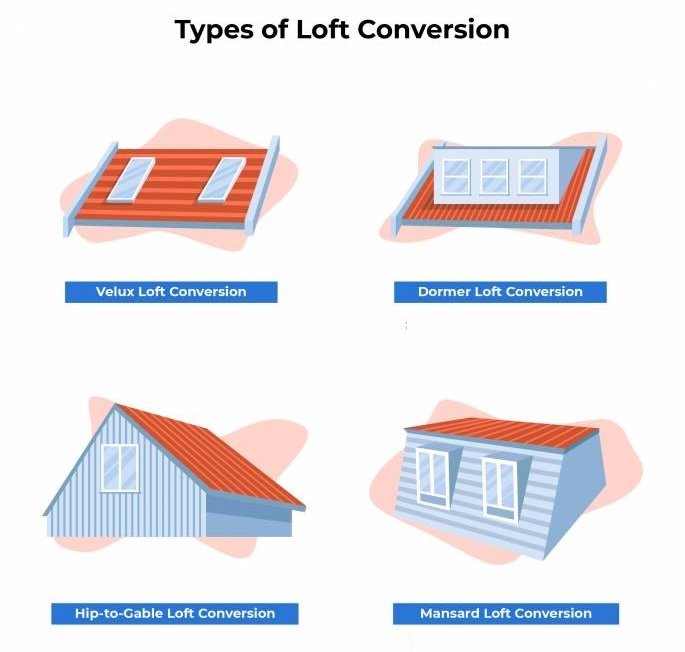
Loft Conversion Cost
One of the main factors impacting the loft conversion cost you'll be quoted is the type of loft conversion you want.
This table provides an overview of the loft conversion cost per square metre (m²) for the four most popular types of loft conversions in the UK.
| Type of Loft Conversion | Average Cost (20m²) | Cost Per m² |
|---|---|---|
| Velux | £20,000 - £30,000 | £1,000 - £1,500 |
| Dormer | £30,000 - £40,000 | £1,500 - £2,000 |
| Hip-to-Gable | £35,000 - £50,000 | £1,750 - £2,500 |
| Mansard | £35,000 - £60,000 | £1,750 - £3,000 |
But what can you expect the loft conversion cost to be more for different-sized conversions?
This is another critical driver on the prices you're quoted for a loft conversion in the UK.
The table below outlines what you can expect.
| Size of Loft Conversion (m²) | Average Cost | Average Cost Range |
|---|---|---|
| 13m² | £24,700 | £19,500 - £29,250 |
| 20m² | £37,500 | £30,000 - £45,000 |
| 30m² | £46,250 | £45,000 - £67,500 |
| 40m² | £75,000 | £60,000 - £90,000 |
Loft Conversion Cost by Type
There are four main types of loft conversion available (Velux, dormer, hip-to-gable, and Mansard).
Which one you choose will depend on how much loft space is usable, the type of attic you have, and your budget.
In the sections below, we cover the characteristics of these four main options and average costs for a typical loft conversion.
Velux Loft Conversion Cost
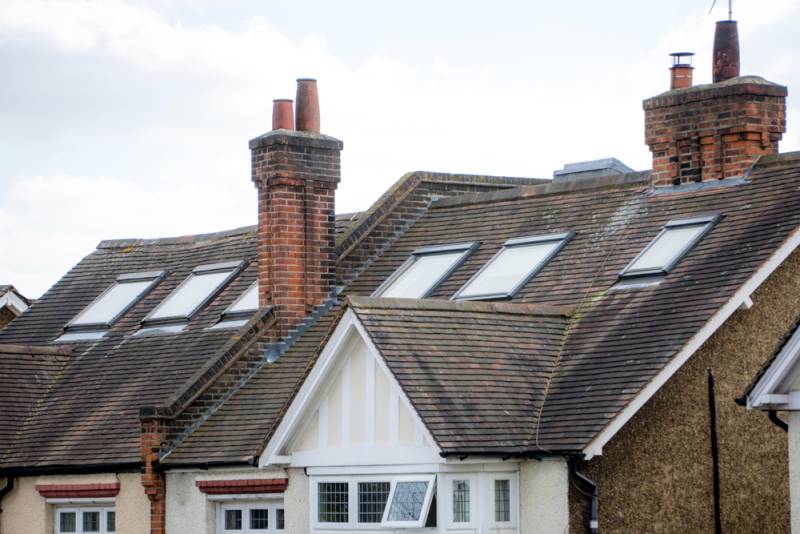
Velux loft conversions are the most cost effective type of loft conversion. They're commonly referred to as skylight or rooflight loft conversions online and by builders.
They're the most straightforward and least disruptive option available. No changes are made to the shape of the roof when converting your attic space in this way. Windows are just added into the existing roofline, the new loft flooring is laid, and a staircase is added.
The downside is that these are only a viable option if you have attic space with sufficient enough headroom, and they also tend to add the least amount of livable space to a loft.
The average cost of a velux loft conversion that's 20m² is between £20,000 - £30,000. This is still a sizable investment, but more affordable than other options.
Dormer Loft Conversion Cost
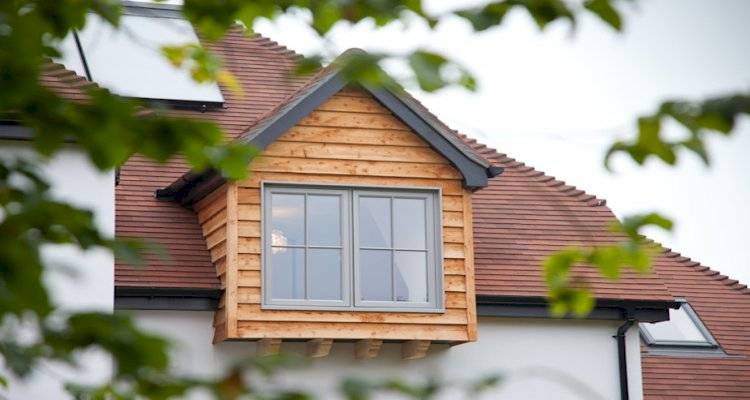
Dormer loft conversions are a popular option in the UK, as they give homeowners the opportunity to greatly increase the amount of headroom and space available in their attic.
They create an extra space that protrudes from a sloping roofline. There are various styles of dormer loft conversions - including flat roof, shed, gable-fronted, and hipped roof. Dormer attic conversions present a distinctive visual adjustment to your property, but improve your home's aesthetic when done right.
The average cost of a dormer loft conversion that's 20m² is between £30,000 - £40,000. This is more expensive than a rooflight loft conversion, but might be necessary if you don't have enough headroom in your attic space.
Hip-to-Gable Loft Conversion Cost
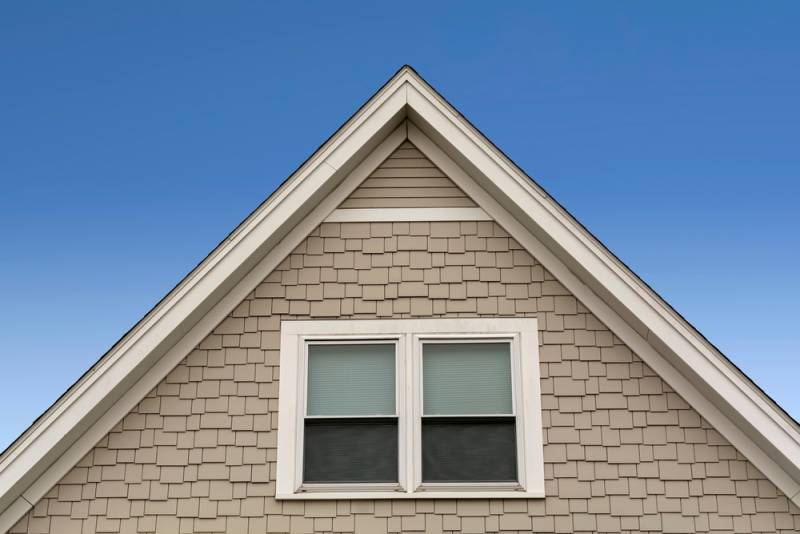
Hip-to-gable loft conversions are sometimes referred to as gable-end or gable-wall conversions by builders.
In a hip-to-gable conversion, the shape of the roof is significantly altered. The top line of the roof is extended so that it runs all the way to the edge of the house.
The end result is that, instead of having a sloping roof on the side of the house, there will now be a vertical gable that can either be made of brick or tile.
This creates a lot of extra space. However, it only works in a semi-detached or detached property with a sloping roof. With a detached home, you can also convert both sides to create a double hip-to-gable conversion.
The average cost of a hip-to-gable loft conversion that's 20m² is between £35,000 - £50,000. This is another step-up in price when compared to average rooflight and dormer attic conversions prices in the UK.
Mansard Loft Conversion Cost
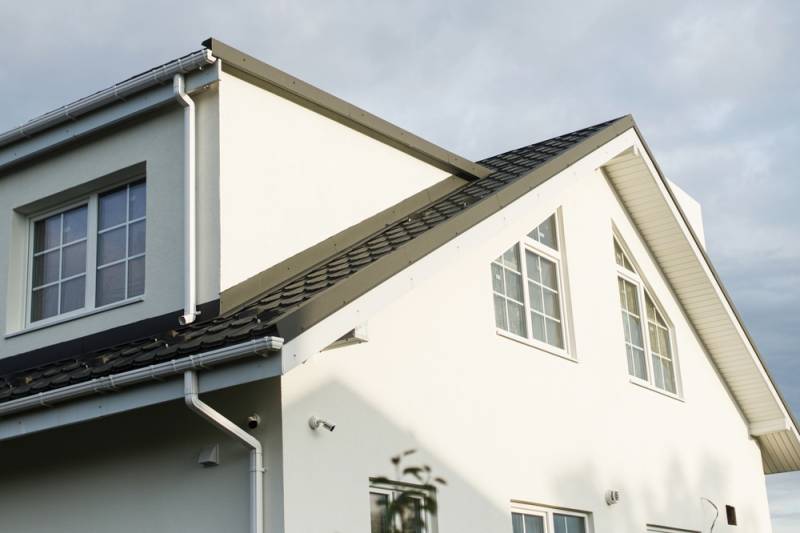
Mansard loft conversions involve changing the whole shape of the roof, which is essentially modified to be almost completely flat. The walls will also be almost vertical (72-degree angle) and, in most cases, dormer windows can be added.
Because Mansard loft conversions cause significant visual change to a property's exterior from these structural changes, they typically require homeowners to get planning permission.
The average cost of a Mansard loft conversion that's 20m² is between £35,000 - £60,000.
While the most expensive option, they provide homeowners the opportunity to maximise the amount of floor space provided by their loft conversion.
Loft Conversion Price Breakdown
There are a lot of different things involved in the total loft conversion price you'll be quoted by tradespeople.
The table below provides a breakdown of the cost of a £40,000 loft conversion in the UK. This would be for a lot conversion that's 30m² that includes a dormer and rooflight over the new staircase. This also covers the electrics and plumbing for a master bedroom with an ensuite bathroom.
| Job | Cost for 30m2 loft |
|---|---|
| Project Management – including building control costs | £8,800 |
| Scaffolding | £3,000 |
| Internal Preparation | £1,000 |
| Alterations to Roof Structure | £4,400 |
| Steelwork to support structural changes | £3,200 |
| Roof Coverings | £6,400 |
| Electrics | £800 |
| Joinery – excluding staircase | £3,800 |
| Staircase | £2,000 |
| Plastering | £2,400 |
| Decoration | £1,200 |
| Total | £40,000 |
Loft Conversion Labour Costs and Timescales
Many different tradespeople are involved in completing a loft conversion.
For an average loft conversion, you should expect 2 - 3 people on-site most of the time.
The time it takes to complete a loft conversion will often depend on how easy it is to schedule all the different tradespeople involved in the project - and if adverse weather occurs at the wrong time.
Labour Costs and Timescales By Loft Conversion Type
The table below covers the portion of the total cost of a loft conversion that typically goes towards labour costs. It also highlights the average time it takes to complete different types of loft conversions.
| Type of Conversion | Duration | Average cost |
|---|---|---|
| Velux Loft Conversion | 4 - 6 weeks | £9,000 - £14,000 |
| Dormer Loft Conversion | 6 - 8 weeks | £20,000 - £40,000 |
| Hip-to-Gable Loft Conversion | 6 - 8 weeks | £20,000 - £35,000 |
| Mansard Loft Conversion | 8 - 10 weeks | £25,000 - £45,000 |
Labour Cost of Loft Conversion By Trade Type
The table below highlights the average prices charged per hour by different types of tradespeople who might be involved in a loft conversion.
The majority of the labour cost of a loft conversion goes towards paying builders.
| Tradesman | Average cost per hour |
|---|---|
| Builder | £20 - £35 |
| Tiler | £20 - £40 |
| Plumber | £35 - £45 |
| Electrician | £50 - £120 |
| Plasterer | £30 - £50 |
| Decorator | £20 - £50 |
Loft Conversion Material Prices
The following tables provide a closer look at the loft conversion material costs. There are many materials and, as a result, many options.
Loft Conversion Window Prices
| Type | Size (cm) | Average Cost |
|---|---|---|
| Velux | 98 x 78 | £325 - £375 |
| 140 x 78 | £400 - £450 | |
| 180 x 78 | £500 - £550 | |
| Dormer | 50 x 50 | £150 - £200 |
| 100 x 100 | £200 - £250 | |
| 120 x 120 | £250 - £300 |
Loft Conversion Flooring Prices
| Type | Average cost per m2 |
|---|---|
| Vinyl | £7 - £20 |
| Wood | £10 - £70 |
| Carpet | £4 - £40 |
| Tile | £10 - £60 |
Loft Conversion Insulation Prices
| Type | Average cost per m2 |
|---|---|
| Sheet | £15 - £25 |
| Loose-Fil | £5 - £15 |
| Blanket | £12 - £27 |
Loft Conversion Stairs Prices
| Type | Average cost per m2 |
|---|---|
| Basic | £1,000 - £1,200 |
| Custom | £3,000 - £10,000 |
| Spiral | £1,000 - £1,500 |
| Alternating Treads | £350 - £750 |
| Fixed ladder with Bannister | £150 - £400 |
General Building Material Prices
| Material | Average cost |
|---|---|
| Electrics | £300 - £600 |
| Structural beams, joists and masonry | £1,500 - £4,000 |
| Bathroom | £4,500 - £6,000 |
| Decorating materials | £800 - £1,600 |
| Built-in Storage | £1,500 - £10,000 |
Additional Loft Conversion Costs
Here are a few additional costs you might come across when building a loft conversion:
-
Plans drawn up by architects: £400 - £1,500
Roof joists: £500 - £1,000
-
House exterior repainted: £550 - £1,500
-
House cladding: £2,500 - £6500
-
House render: £2,000 - £8000
-
Roof cleaning: £300 - £600
-
Replacing roof tiles: £170 - £500
-
Underfloor heating: £800 - £7,700
-
Wet room: £4,000 - £7,000
-
Boarding and insulating loft: £1,500
Bat survey: £300 - £400
Building regulations: £40 - £800
Party wall survey: £150 - £200
Moving a water tank: £100 - £200
-
New boiler: £1,500 - £3,500
Cost Factors of a Loft Conversion
Because a loft conversion is a big job, many factors will have an effect on the costs involved. Every decision you make when creating this additional space will impact the price.
Type of Roof Tiles
If the conversion involves changing the existing roof structure, then the type of tiles you have on your roof will impact the cost - as some will likely have to be replaced during the construction process.
The cost of installing or replacing roof tiles varies depending on what type of material they are, with slate roof tiles typically being more expensive than clay or concrete tiles to install or replace.
Size of Loft Conversion
The bigger the final space will be, the higher the price of a loft conversion.
Average costs for a small basic loft conversion can be as little as £13,000 - £20,000.
A mid-sized loft conversion making space for a double bedroom with two windows would cost around £18,000 - £25,000. And average costs for a large double bedroom with an ensuite bathroom would be around £25,000 - £40,000.
Window Choices
The more windows you want your loft conversion to have, the higher the price is going to be.
The cost of Velux windows will be less than dormer windows, with dormer window costs being around £4,000 - £6,000 and Velux windows costing £800 - £1,100.
Internal Walls
If you decide to split your new loft space into multiple rooms, you will need to add the cost of the extra walls. A stud wall and plater will cost around £850.
Plumbing Cost
The more plumbing you need to have, the higher the cost of the loft conversion. You will need to consider materials cost, as well as the hourly rate of a plumber - which is around £35 - £45 per hour.
Electrics Cost
The more electrical sockets and lights you have, the higher the price of a attic conversion. Electricians usually charge per hour, rather than per job - so you can save money by picking easy-to-install items.
The average cost of an electrician is between £50 - £120 per hour.
Do I Need an Architect for a Loft Conversion?
Whether you need an architect will depend on the contractor you choose.
Many loft conversion specialists are happy to work without an architect and rely on their own experience. This can save you a bit of money early on in the process, but ultimately it might lead to problems later on in a loft conversion project.
Having an architect draw up plans for your loft conversion serves two main purposes:
The first reason to get plans drawn up is to ensure that the loft conversion work can be completed safely.
The second reason to get plans is so that you have a clear and agreed-upon vision for what the final product will look like. Without plans, it is easy for you and your contractor to be working at cross purposes. With a set of plans drawn up, you have a clear record of what the loft conversion should look like - there will be no ambiguity whatsoever.
The cost of getting plans drawn up by an architect depends on how detailed they are.
Basic loft conversion plans cost around £400, but more detailed loft conversion plans can cost up to £1,500. While they are more costly, the detailed plans can allow contractors to give you a more accurate loft conversion cost when quoting for the job.
Loft Conversion Stairs Cost
Any loft conversion in the UK now requires a staircase. You can no longer simply put in a pulldown ladder because of fire safety concerns.
You will need to plan where the staircase will go carefully. To make the most of the space you have, you should have the top of the staircase arrive in line with the roof ridge. This means that as you climb, you follow the slope of the roof. If possible, the best place for the stairs is to continue on from your existing staircase.
The cost of staircases varies dramatically. A basic staircase costs between £1,000 - £1,200. If you want a custom-made designer staircase, you could be paying as much as £10,000 though.
There are some rules that govern the design of the staircase
- Number of Steps
- Size of Steps
- Bannister
- Space Saving Staircase Costs
Building regulations limit you to a maximum of 16 steps in a straight line. However, most loft conversions only require 13.
The rise of each step can be no more than 22cm and each step must be at least 22mm deep. Winder steps that go around the corners but be at least 5cm deep at the smallest point.
The bannister must be at least 90cm above the pitch line of the stairs. The spindles must be spaced so that a solid ball with a 10cm diameter can’t pass through.
Building regulations require a permanent staircase, but that doesn’t mean it has to be a traditional staircase. Spiral staircases have a smaller footprint than traditional staircases, so they can be a good option in close quarters. The cost of a spiral staircase starts at £1,000.
Space-saving staircases with alternate treads start from £350. The most stripped-down option is a no-retractable ladder with a fixed bannister. These are the cheapest options, starting at £150.
Can I Have a Loft Conversion?
Before you start planning your loft conversion, you should find out if you'll be able to have one done and what type of loft conversion is most suitable for your property.
There are a few things you can check that will help to give you an answer.
Do Neighbours Have Loft Conversions?
An easy way to see if you can get a loft conversion done is to see if any other homes on your street or in the wider neighbourhood have already had one.
If you find a similar home to yours that has a loft conversion, then you are probably good to go. This would also be a good opportunity to speak to the owner about their experience - they might have some useful insight for your project.
Do You Have Enough Head Space?
In order to have a usable space, you need sufficient headspace in your loft. This is the distance between the floor and the ceiling. The minimum height for loft conversion is 2.2m.
It's easy to measure for yourself with a tape measure. This will help you to visualise how much space you will have without making any alterations to the existing roof structure.
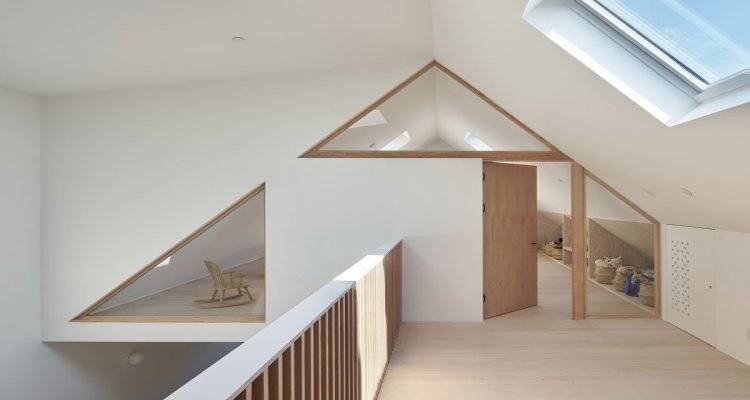
Do You Have Space For a Loft Conversion Staircase?
It can be easy to forget to consider the space on the floor below the loft conversion. A staircase, no matter how compact, will take up a good chunk of floor space. You need to identify an area where you are happy to put the staircase.
Is Your Home Listed?
If your home is listed, then you may not be able to get any form of loft conversion. Or you may be limited to a rooflight loft, which will not change the shape of the existing roof or the appearance from the front of the property.
Talk To An Architect
The best way to be certain if your home is suitable for a loft conversion is to have a consultation with an architect. They will be able to inspect your property and give you a clear answer on if it is possible to have a loft conversion or not.
Loft Conversion Ideas
A loft conversion can be used for whatever you need - the only limit is your imagination!
It's always a good idea to look at the size and shape of the space you have in your attic, as this influences what's the most practical option for your loft conversion. You might end up moving other rooms in the house around as a result.
Some of the most common uses for loft rooms are as follows:
Children's Bedrooms
A popular use of a loft conversion is as a children's bedroom. If the space you end up with is quite narrow, then it can work better with a child's bed rather than a full-size bed. A lot of children also like the idea of having a room at the very top of the house!
Master Bedroom with Ensuite
With its sloping ceilings, an attic room can feel like a lovely retreat. If you have a good-sized space, it is a great place to put your master bedroom. With an ensuite as well, it can feel like your own private space in an otherwise busy house.
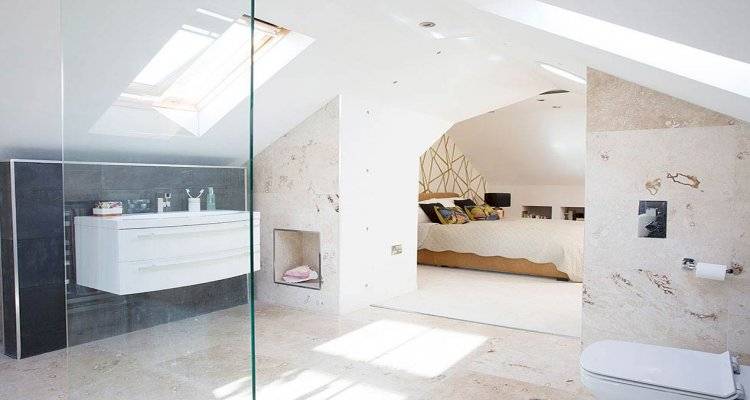
Guest Room
A loft is a great place for a guest room. Since the room is not used every day, it is easy to close it up when not in use, and your guests can feel like they have their own special - separate - place in your home to relax in.
Playroom
If you have a growing family, then a whole room dedicated to toys can be a blessing. The sloping ceiling can make for lots of exciting hiding holes, forts, and your children's imaginations can run wild!
Office
Tucked away at the top of the house, a loft room is a great spot for an office. You are lifted above all the family life, so you are less likely to be interrupted. It also creates a bit of separation between work and home for anyone who has to work from home regularly.
Bathroom
Bathrooms are often viewed as solely functional spaces. However, given the blank canvas of a loft conversion, you could create your own decadent spa room.
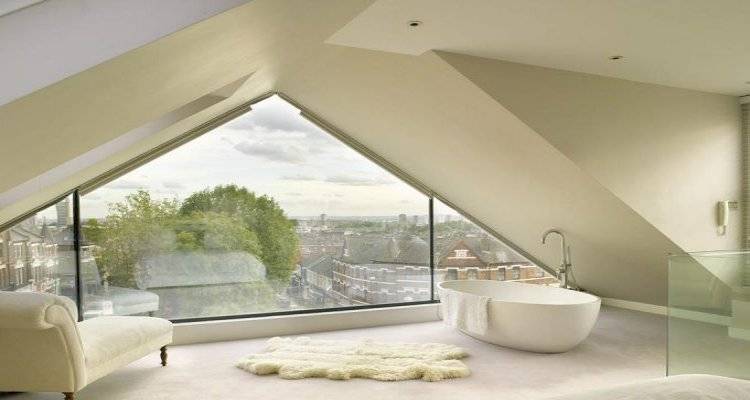
Home Cinema
The cosy dimensions of a loft room can lend itself very well to a home cinema. Going up the stairs to watch a film can make it feel like a special experience.
Do You Need Planning Permission for a Loft Conversion?
In most cases, planning permission for loft conversions isn’t needed as you'll be covered by permitted development. However, it's important to confirm this with your architect or builder.
However, as long as all of the following provisions apply, you shouldn't need to get planning permission:
The total space created from all extensions does not exceed 40m³ for a terraced home and 50m³ for a semi-detached or detached home.
The conversion will not extend beyond the existing roof slope at the front of the house.
The maximum height of the existing roof is not increased.
Similar materials to those that are on the existing building are used.
No verandas, balconies, or raised platforms are added.
Side facing windows are not clear glass – the view is obstructed.
With the exception of hip-to-gable conversions, the roof extension is set back at least 20cm from the original eaves.
The conversion does not overhang the original walls.
How long after getting planning permission can we leave it until we start our loft conversion?
Building Regulations For Loft Conversions
Any loft conversion will need to meet building regulations. This applies even if planning permission is not needed.
Building regulations are about making sure that the new additions to your home are safe and structurally sound. You will need to make sure you get this done if you intend to sell the property in the future.
Building regulations will dictate some of the materials that must be used and the construction of the loft space. It'll likely affect the layout as well; for instance, you will need to have doors to rooms at the top of a staircase.
Your architect or builder should make sure that any loft conversion meets building regulations. You can also expect your contractor to arrange any necessary inspections and visits during the course of the work.
However, make sure you check with your builder that they will do this. You are ultimately responsible for making sure that all the work meets building regulations.
Party Wall Agreement
If your loft conversion affects the party wall (the shared wall) with your neighbour, then you must inform them. This might be the case if you will be removing a chimney that sits against the party wall during your loft conversion.
If you aren't sure, you can hire a party wall surveyor to give you some guidance. This usually costs between £150 - £200.
If you need an agreement, you'll need to notify your neighbour at least 2 months before work starts but no more than 1 year. It's usually a good idea to speak to them about it first.
After you officially notify your neighbour of the work, they have two main options: they can agree to the work or they can dissent.
If they dissent, you will need to get an agreement drawn up. This usually costs between £800 - £1,000. The agreement documents the condition of the party wall. It also sets out conditions identifying responsibility for any damage to the party wall that occur.
In many cases, you can save money by simply talking to your neighbour and coming to an amicable agreement. However, it's advisable to document the state of the party wall before you begin any work near or on it.
What's Involved in a Loft Conversion?
A loft conversion is a big job with lots of steps to it.
If you get a contractor who is able to get all their tradesmen and labourers organised with no delays, and the weather is onside for the whole project, you can expect the work to go as outlined below.
Of course, this is an ideal schedule. It represents the minimum time for each step and assumes the next job can start immediately after the other has been finished.
- Week 1
- Week 2
- Week 3
- Week 4
- Week 5
- Week 6
The first step is to erect the scaffolding. The materials needed for the job will be gathered on-site. The roof will be opened up during this week.
If the roof structure is changing, this will happen next. If needed, extra supports may be installed. For a rooflight conversion, the windows will go in at this point. For a dormer conversion, the dormer will be constructed.
The external work will be finished during this week. Any construction on the roof will be finished, and the tiles will be replaced and finished. Roof insulation will also be fitted. Internally, the loft space will be ready for any plumbing and electrical work that needs to be done.
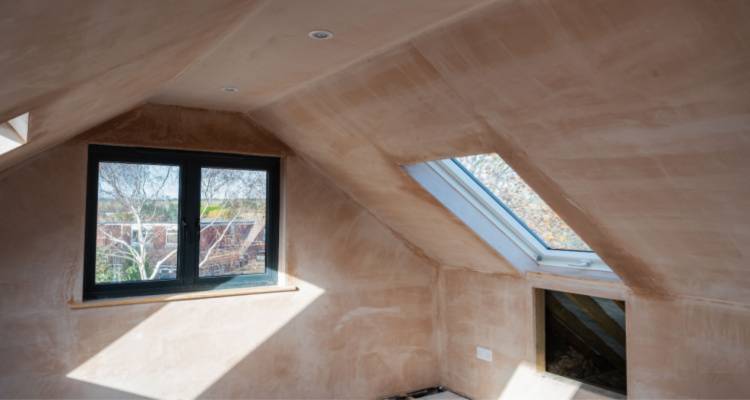
Any windows that have yet to be installed will be fitted. The floor will be laid with any ventilation as needed. The plasterboard will be fitted, and any internal walls will be built.
The staircase will go in at this point. If you are having a bathroom fitted, it can go in at the same time. This week, you should also expect the electrics to be finished. Towards the end of the week, the doors will be hung, the plaster skimmed, and the skirting fixed.
Any unfinished jobs will be completed during this week. If your contractor is responsible for the decorating, that will happen during this week. The scaffolding will also come down during this week.
Can I Build a Loft Conversion Myself?
If you have building experience, there is no reason why you couldn't do a DIY loft conversion. However, taking on the whole project by yourself may be too much for most DIYers.
If you are planning a rooflight conversion that will not change the roof's structure, you should be able to carry out a lot of the work on your own. A fully DIY loft conversion costs as little as £6,000 - which represents a significant saving over having someone else do the work. However, a DIY loft conversion requires a lot of time and expertise, so it won't be a suitable DIY project for everyone.
For a loft conversion that involves a lot of structural changes, you would be better off leaving the project to a contractor. The same is true of plumbing, electrics, and fitting the staircase.
Some parts of the job that any confident DIYer could do include:
| Job | Average Saving |
|---|---|
| Clearing out the loft space before the work starts – remove any debris or unused water tanks. | £45 - £50 per m2 of loft space |
| Putting insulation in between the rafters and beneath the new floor | £400 - £700 |
| Laying the flooring | £10 - £12 per m2 of flooring |
| Building internal walls | £200 - £225 per m2 of wall |
| Boarding and plastering | £90 - £110 per m2 of wall |
| Decorating | £40 - £50 per m2 of loft space |
Taking on any of these jobs will save you some money. The more you do yourself, the more money you will be able to save. If you do intend to take on some of the work yourself, make sure that you communicate this to your contractor early on as they will need to plan the rest of the project around you.
Benefits of a Loft Conversion
There are many different benefits to adding a loft conversion to your home. So, when you are considering the cost of a loft conversion, don’t forget to consider all of these benefits!
Add Value To Your House
The money that you put into your home in the form of a loft conversion will be reflected in the resale value of your home. There are few improvements you can make to a home that can offer the same return on investment as a loft conversion does.
Avoid the Cost of Moving
If you've outgrown the space in your current home, then your main options are to move or extend your home. A loft conversion offers you a way to get more space without the cost and hassle of moving.
Adding Natural Light
When you convert your loft, you can take the opportunity to fit windows over the stairway up to it. This will allow natural light to filter into your home.
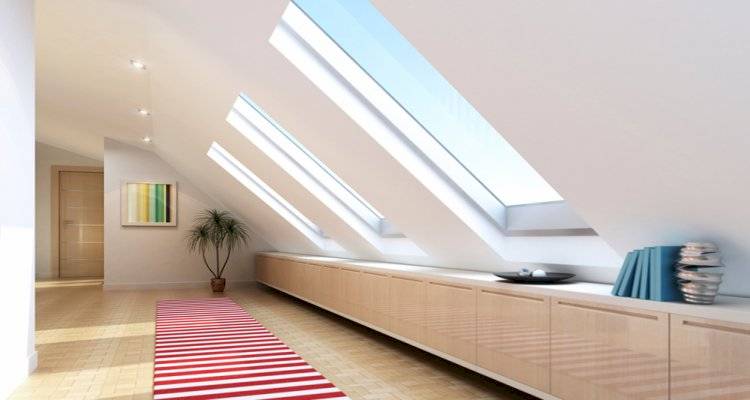
Energy Efficient
During the process of a loft conversion, you will have to add insulation to comply with building regulations.
This not only makes the loft conversion usable all year round but also improves the energy efficiency of your entire home, which translates into lower heating bills when the winter weather comes along.
Grow Without Losing Outdoor Space
When you have to choose between moving or extending your home because of a growing family, the last thing you want to do is give up garden space. A traditional extension eats up your outdoor space.
With a loft extension, you gain more space in your home without sacrificing your garden. This is the perfect choice for a growing family.
Will a Loft Conversion Increase My House Value?
It's widely agreed that a loft conversion is the best value-for-money option for home improvement. The extra space afforded by a loft conversion will undoubtedly add value to your property too. According to recent reports, loft conversions in the UK can increase the value of a property by up to 25%.
If your aim is to increase the value of your property with a loft conversion, then you should do some research before you start. This is because there is a ceiling to what houses will sell for in most areas.
For example: in your area, houses might sell for a maximum of £350,000. If you spent £320,000 on your home, then there would be no point in spending more than £30,000 on your loft conversion. Spending more than that is unlikely to increase the value of your home much further. So, make sure to do some research to help you fix your budget.
Can I Have a Loft Conversion in My Bungalow?
Loft conversions are possible in bungalows. If you have a lot of headspace in the loft, you can have a simple rooflight conversion. Otherwise, you can choose either a dormer or a hip-to-gable conversion of the attic.
The costs of loft conversion aren't much different for bungalows than two-storey houses.
The average bungalow loft conversion costs around £35,000. This ranges from around £20,000 for a basic conversion of a bungalow loft space to around £70,000 for a more premium bungalow attic conversion.
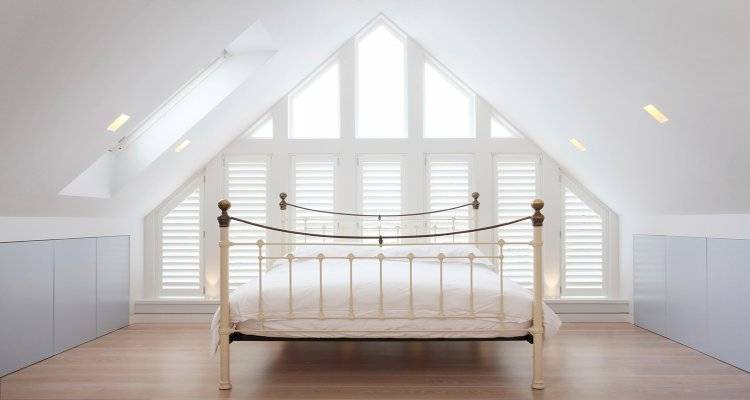
How to Keep Down Costs of a Loft Conversion
A loft conversion can be an expensive project to embark on.
Here are a few things you can consider to help keep your loft conversion price down.
Take On The Project Management
A loft conversion will require the services of many different tradesmen. In most cases, you will hire a lead contractor who will manage the whole process on your behalf. This involves coordinating the deliveries and the tradespeople so that all the work is completed at the right time.
You will pay your contractor extra for them to take on this role though, as it does come with extra demands on their time. If you have the time to stay on-site and manage the project yourself, this can save you between £1,500 - £10,000 depending on the scale of the job.
DIY Parts Of The Job
Taking on as many of the jobs as you can will save you money. Even just doing the decorating yourself can save you as much as £2,000.
Plan Well
The best way to keep costs down during a loft conversion is to plan out everything that you want in great detail before you even begin. The highest costs arise when you make a decision midway through the project. Getting an architect to draw up detailed plans can help with this and save you money in the long run.
Fix Your Budget and Stick To It
Be strict. Decide how much you want to spend on your loft conversion and stick to it. This will also affect your planning. You need to decide where and how you want to spend your money before work begins. That way, you won't end up overspending on items.
Issues You May Come Across When Converting a Loft
Because the scope of a loft conversion project is large, there are many opportunities for problems to arise. Good planning before you begin a loft conversion will usually prevent many of the most common pitfalls.
Here are a few things to look out for.
Party Wall Disagreements
If your neighbour objects to the work, or claims that you have caused damage to the party wall during the work, you can suffer unexpected delays and legal expenses. To avoid this, you should make sure to speak to your neighbour before work begins.
If you anticipate a problem, make sure to get a party wall agreement in place at least two months before you start work - but no more than a year early.
Finding Asbestos
If you have an older home, it is possible that you might come across asbestos in your loft space.
Finding asbestos unexpectedly can be a problem. If your home is older and suspect it might have asbestos, ensure you get it surveyed before you begin any work.
If this is an issue you come across, the average asbestos removal cost is £2,500.
Furniture That Doesn’t Fit
Your choice of staircase might limit what furniture you can put up in your loft.
If you have your heart set on a large piece of furniture, you should speak to your contractor early on. They might be able to arrange to have the furniture taken up before the bannister or the door frames are built - negating the issue.
Fixtures That Don’t Fit
If you are sourcing fixtures like baths, showers, and sinks, you can sometimes find that they don't fit in the room. Make sure to start planning early. You should especially consider where the water supply will be and how much space you have for doors to open.
Missing Planning Permission
If you need planning permission because of the scope of the work or because the building is listed, it can be expensive to resolve. You might even have to undo all the work.
If there is any chance you might need planning permission, you should speak to the local council. The cost for a notice of lawful development is between £100 - £400. This will protect you in the future from any disputes.
Loft Conversion Removal Cost
If a loft conversion does not meet building regulations, then you may wish to ‘remove it’. It depends on what sort of loft conversion it was and how difficult it would be to meet building regulations.
The simplest and cheapest option would be to remove the staircase and replace it with a standard loft access hatch. The cost of removing a loft conversion staircase would be between £500 - £1,000.
Hiring a Loft Conversion Specialist Checklist
When you're hiring a contractor for a loft conversion, you'll need to have confidence in their abilities to complete the job. Loft conversions are large projects, so it's critical to find the right person for the job.
Here are some things to look for to help you make your decision:
-
They should be willing to show you around previous projects. When they do, speak to the owners and ask about their experience. Ideally, you would want to see a recently completed job as well as one that was done some time ago. This will give you a good idea about the quality of the work you can expect from the tradesperson.
-
Ask to speak to a few of their previous clients. It's a good sign if they're happy to give you a long list of names. When you speak to their previous clients, check what their relationship with the contractor was like.
-
Make sure your contractor gives you a full breakdown of costs. You need these details when they provide you with the loft conversion quote, so there is no room for confusion about what work is included and the cost associated with each stage of the process.
-
It's a good sign if a contractor is taking notes when you discuss what you want doing. It means that your needs and wants are less likely to be forgotten about - and, again, leaves no room for confusion about what you're after.
-
Check who will be responsible for organising building control visits. Most contractors will do this, but make sure it's clearly agreed upon between you, as the responsibility ultimately lies with the homeowner.
FAQs
How much does a basic small loft conversion cost in the UK?
The average cost of a basic small loft conversion in the UK is between £13,000 - £20,000. This would be the approximate cost of adding a single room of around 13m² to your attic space.
However, the total cost of a small basic loft conversion depends on the type of loft conversion you want (i.e. velux, dormer, hip to gable, or mansard), where you're located in the UK (southern regions have higher labour costs) and the quality of the materials you want to use.
What does a bungalow loft conversion cost?
The average cost of a bungalow loft conversion is about £35,000, and experienced builders usually take up to 10 weeks to complete the job.
However, bungalow loft conversion prices depend on the type of loft conversion you choose to have (i.e. rooflight, dormer, hip to gable, or mansard), where you're located in the UK (southern regions have higher labour costs), the quality of materials used in the installation, and the area you want to convert.
For converting 20m² of a bungalow's attic space, a basic job will cost between £20,000 - £25,000, and using higher-quality materials will cost between £30,000 - £35,000.
What is the cheapest way to convert a loft in the UK?
A Velux loft conversion is the cheapest way to convert a loft space in the UK, costing between £20,000 - £30,000 for the conversion of 20m². These are the most straightforward and least disruptive loft conversions, as they require no changes to the existing roofline. However, Velux loft conversions aren't a suitable option for all types of houses.
What is a shell loft conversion?
Shell loft conversions are a DIY-friendly way of converting your loft space. They involve professionals completing all of the major structural alterations (e.g., installing the beams, sorting the floor out, and adding a staircase) but leaving the interior completely bare. This makes them ideal if you want to lower the total cost of a loft conversion by doing some of the more straightforward tasks yourself. It's also a good option if you want to spread out the loft conversion costs by slowly completing the job.
Do I need insurance if I convert a loft myself?
If you're planning to undertake part or all of the work involved in a loft conversion, it's advisable to take out self-build insurance with a reputable insurance company. Self-build insurance covers you for any damage that you accidentally make to the property when carrying out improvements on it - although the specifics of the cover will vary from provider to provider.
Will a loft conversion affect my council tax?
Council tax bands are only reviewed when properties are sold or if you explicitly ask them to review it. Because of this, adding a loft conversion should have no impact on the council tax band that your property falls into.
Can I get a grant for the insulation in my loft conversion?
There are grants available in the UK to help with loft insulation costs. However, your eligibility to receive these grants is mostly dependent on your personal situation. You should visit your energy supplier's website or give them a call to find out more.
How much value does a loft conversion add to your home?
According to Nationwide, a loft conversion can increase the value of a 3-bedroom house in the UK by up to 25%. This is based on the conversion of an attic space so that there's 28m² more usable space in the home.
However, even smaller loft conversion can increase the value of your home. This same report highlights that the addition of a single extra bedroom (around 13m²) adds about 13% to the value of a home.
Sources
https://www.gov.uk/party-walls-building-works
https://hoa.org.uk/advice/guides-for-homeowners/i-am-improving/party-wall-agreement/
https://www.self-build.co.uk/how-convert-loft/
https://www.nationwidehousepriceindex.co.uk/reports/dwd
https://www.idealhome.co.uk/project-planning/loft-conversion-ideas-70356


